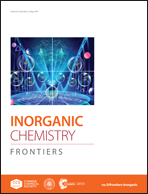Tin nanoparticles embedded in an N-doped microporous carbon matrix derived from ZIF-8 as an anode for ultralong-life and ultrahigh-rate lithium-ion batteries†
Abstract
Sn is a promising anode material for lithium-ion batteries (LIBs). However, the huge volume changes during lithiation/delithiation processes lead to the pulverization of electrodes, thus resulting in poor cycling stability and rate performance. An N-doped microporous carbon matrix (N-MCM) derived from ZIF-8 with highly porous structures and open frameworks can effectively buffer volume expansion, restrain the aggregation of Sn nanoparticles and accelerate the diffusion of electrons/Li ions, contributing to the improvement of the electrochemical performance. Herein, we firstly used a facile chemical vapor transformation (CVT) method to confine Sn (∼0.8 nm) in an N-doped microporous carbon matrix (Sn@N-MCM). The as-prepared Sn@N-MCM as an anode for LIBs displays a high specific capacity (814.3 mA h g−1 at 0.1 A g−1), an excellent rate capability (225.5 mA h g−1 even at 20 A g−1), and an outstanding cycling stability (470 mA h g−1 after 2500 cycles at 4 A g−1). This work may open up a new avenue to design energy storage materials by utilizing the facile CVT method.



 Please wait while we load your content...
Please wait while we load your content...